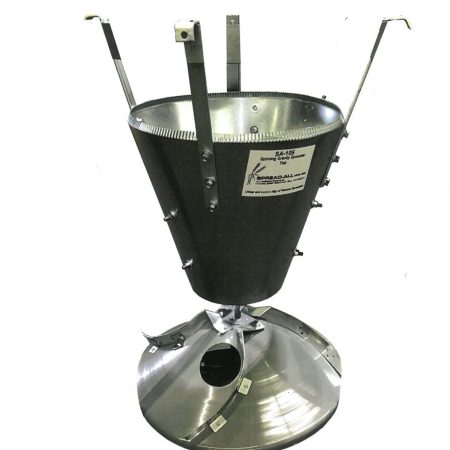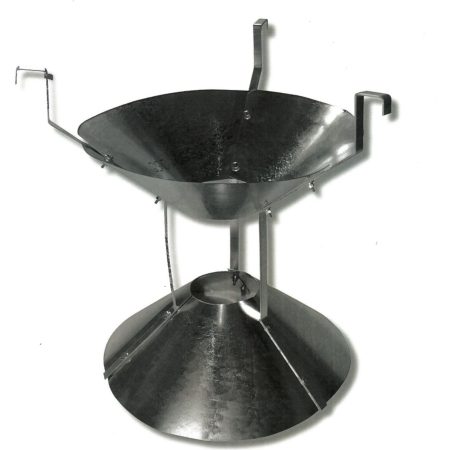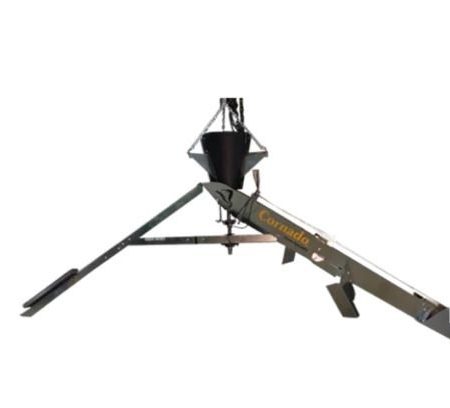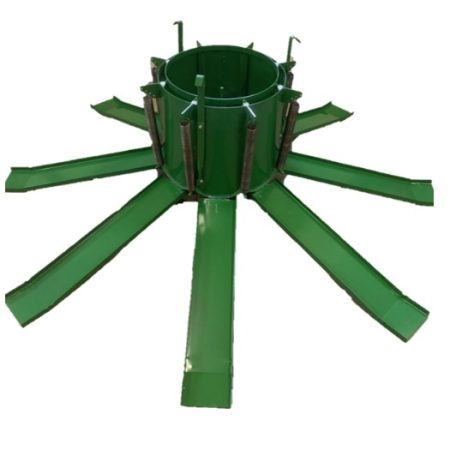Showing all 4 resultsSorted by popularity
-

Spread-All Spinning Gravity Spreader
$669.74Estimated Ship Time: 3 DaysSelect options This product has multiple variants. The options may be chosen on the product page -

Spread-All Fixed Gravity Spreader
$246.56Estimated Ship Time: 3 DaysAdd to cart -

Cornado Grain Spreader
Price range: $2,681.40 through $6,652.50Estimated Ship Time: 1 - 2 WeeksSelect options This product has multiple variants. The options may be chosen on the product page -

Agnew Gravity Spreader
Price range: $750.00 through $2,100.00Estimated Ship Time: 1 WeekSelect options This product has multiple variants. The options may be chosen on the product page
Gravity-Fed Grain Bin Spreaders: Precision, Efficiency, and Proven Performance
In grain storage, efficiency and grain quality go hand-in-hand. The smallest components can make the biggest difference when it comes to preserving harvest value and extending the shelf life of stored crops. One such component—often underappreciated—is the grain bin spreader. Specifically, gravity-fed grain bin spreaders offer a cost-effective and reliable method for achieving even grain distribution without the complexity of powered systems.
Gravity-fed spreaders harness the natural momentum of falling grain to evenly distribute it across the bin floor. This equal distribution is essential for minimizing fines buildup in the center of the bin, promoting proper aeration, and reducing the risk of hot spots, spoilage, and grain deterioration. Among the top choices in gravity-fed technology are the Cornado Spreader, the Spread-All Spreader, and the Agnew Spreader—each with a reputation for durability, quality construction, and dependable performance.
The Role of Gravity-Fed Grain Bin Spreaders
Gravity-fed spreaders operate without motors, gearboxes, or power sources. As grain enters the bin from an overhead auger or conveyor, it flows directly into the spreader bowl or funnel. The kinetic energy of the falling grain causes the spreader arms or deflectors to rotate, dispersing grain evenly across the bin floor.
This simple mechanism offers several advantages:
-
No electricity or wiring needed
-
Lower maintenance requirements
-
Reduced operational costs
-
Quiet, safe, and easy to install
Because they do not rely on mechanical or electrical components, gravity-fed spreaders are particularly attractive for smaller operations, remote sites, and farms looking to reduce maintenance overhead.
Benefits of Using Gravity-Fed Spreaders
-
Even Grain Distribution
Uneven grain piles lead to fines accumulating in the center of the bin. This impedes airflow and creates dense zones where moisture and heat build up. Gravity spreaders distribute grain more evenly, preventing central cores of fines and maintaining airflow throughout the grain mass. -
Improved Aeration Efficiency
Aeration systems work best when air can flow uniformly through the grain. With a gravity-fed spreader, the even layering of grain prevents compacted areas that restrict airflow, resulting in more consistent temperature and moisture levels. -
Reduced Spoilage Risk
By avoiding uneven grain buildup, gravity spreaders help eliminate hot spots—areas that can foster mold growth, insect activity, and spoilage. -
Enhanced Bin Longevity
Properly distributed grain also reduces lateral pressure on the bin walls, protecting the structural integrity of the bin over time.
Top Gravity-Fed Spreaders on the Market
Cornado Grain Spreader
The Cornado Spreader is a premium gravity-fed model known for its simplicity and high build quality. Manufactured with heavy-duty steel and powder-coated for corrosion resistance, the Cornado is designed to withstand the harshest conditions found on the farm. It accommodates a wide range of grain types, including corn, wheat, soybeans, and barley.
What sets the Cornado apart is its precision balancing. This ensures consistent rotation even under varied grain flow rates. Its bowl design is optimized to handle higher capacity augers, making it suitable for both small and medium-sized bins. Additionally, it features adjustable spreader arms, allowing users to fine-tune distribution patterns based on bin diameter and grain type.
Spread-All Grain Spreader
The Spread-All Spreader lives up to its name by providing one of the most uniform and customizable spread patterns in the industry. Built with both farm and commercial users in mind, Spread-All offers models with capacity ratings from 2,000 to 10,000 bushels per hour.
Constructed from galvanized or stainless steel, Spread-All units are rust-resistant and highly durable. Their proprietary adjustable vanes allow for precise control over throw distance and angle, making it easy to dial in perfect coverage across bins of various diameters.
Many users praise the Spread-All for its easy assembly and low-maintenance design. It’s particularly well-suited for farms using multiple bin sizes, as the unit can be quickly adjusted without the need for tools or modifications.
Agnew Grain Spreader
The Agnew Spreader has built a solid reputation for dependable performance over decades of use. It is a gravity-fed workhorse known for its rugged, long-lasting components. Its signature bowl-and-paddle design evenly spreads grain while minimizing fines concentration, which is a key concern in aerated grain storage.
The Agnew model stands out for its ability to self-level during operation, even when the bin or auger feed is not perfectly centered. This makes it ideal for older bins or farm setups where equipment alignment is not always perfect. It is also praised for its wide compatibility with different grain types and auger systems.
Farmers who use Agnew spreaders often remark on their “set it and forget it” reliability—a testament to its smart, mechanical simplicity.
Choosing the Right Gravity Spreader
When deciding which gravity-fed spreader is right for your operation, consider the following factors:
-
Grain type and volume: Corn, soybeans, and wheat vary in density and flow behavior.
-
Bin diameter: Larger bins may require wider spread patterns or adjustable vanes.
-
Auger capacity: Match the spreader to your grain flow rate for consistent distribution.
-
Budget and maintenance expectations: Gravity spreaders already minimize costs, but choosing a model with corrosion-resistant materials will save even more over time.
Conclusion
Gravity-fed grain bin spreaders are an essential yet economical tool for optimizing grain storage. By preventing the buildup of fines and promoting even distribution, they improve aeration efficiency, reduce spoilage risk, and preserve grain quality throughout the storage season.
Models like the Cornado, Spread-All, and Agnew stand out for their durable construction, intelligent design, and proven performance in real-world agricultural settings. Whether you’re upgrading an existing bin or planning a new storage setup, investing in a high-quality gravity-fed spreader is a smart move that pays off in preserved harvest value and operational peace of mind.
